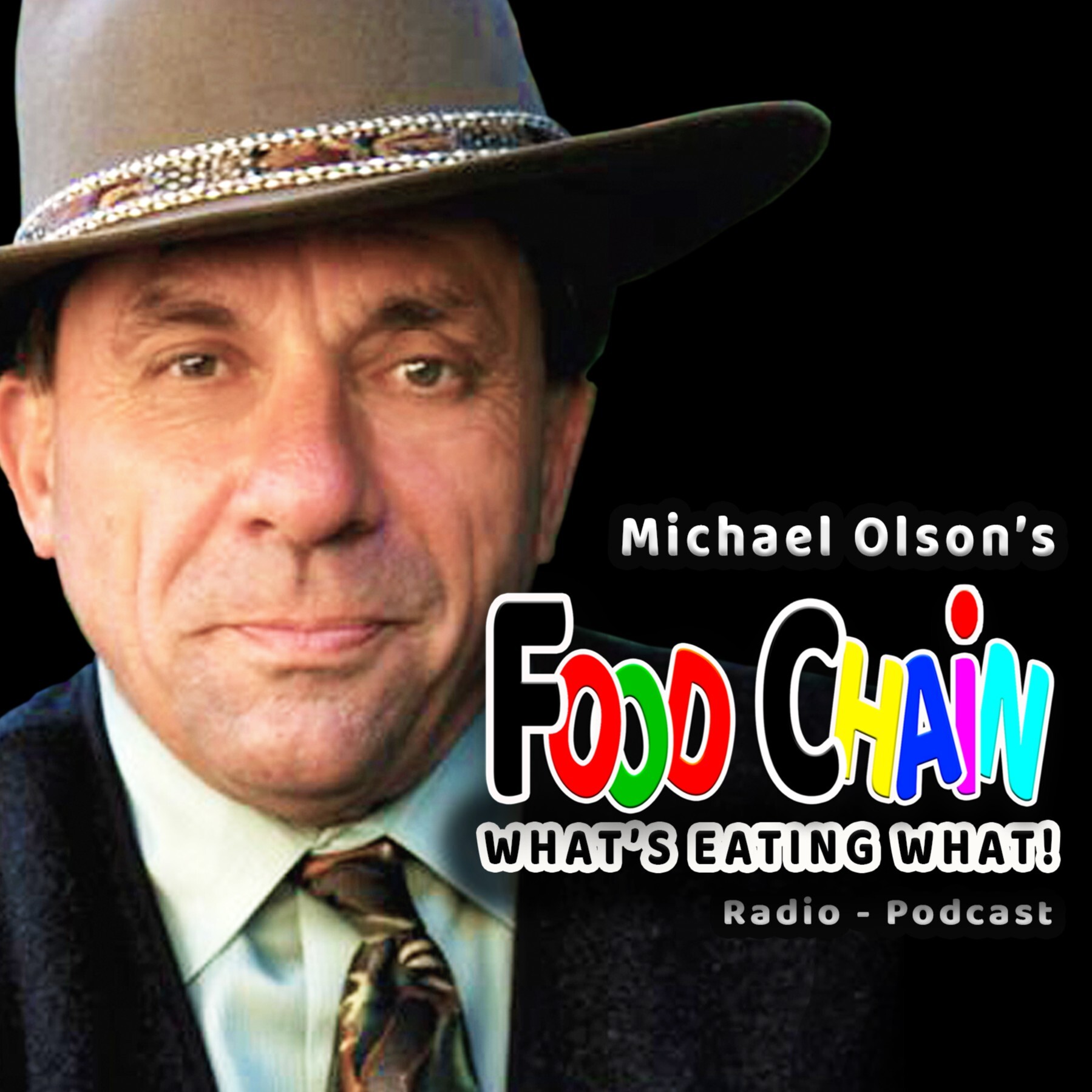
1.4K
Downloads
75
Episodes
It’s a fact! 100% of men, women and children eat food, and 97.5% of must buy their food from others who bring it from an average of 2,000 miles away. And so the hungry ask: ”What’s in this tomato? Who planted that broccoli? Is it safe to eat genetically engineered corn? Why are they irradiating meat? Are we running short of water? Why is China growing our apples? What will happen to us if we can no longer farm? How safe is our food chain?” The Food Chain is an audience-interactive syndicated newstalk radio program and podcast broadcasting weekly on radio stations and streaming on demand on the internet. The Food Chain, which has been named the Ag/News Show of the Year by California’s legislature, is hosted by Michael Olson, author of the Ben Franklin Book of the Year award-winning MetroFarm, a 576-page guide to metropolitan agriculture. The Food Chain is available live via GCN Starguide GE 8 and delayed via MP3/FTP. For clearance and/or technical information, please call Michael Olson at 831-566-4209 or email michaelo@metrofarm.com
Episodes

Sunday Oct 05, 2025
Ep 1401 Horse: A Genetic Ride Back to the Beginning
Sunday Oct 05, 2025
Sunday Oct 05, 2025
Before the horse we walked everywhere, and it was a downright slog to get there. But 4,750 years ago, a mutant gene began working its way through the horse herds of the Eurasian Steppes. Then, about 800 years ago, Genghis Khan raced those horses throughout the World to conquer one and all. And so we ask:
Have you ridden a horse?
The Food Chain Radio Show - Podcast with Michael Olson hosts Ludovic Orlando, Molecular Archaeologist, Founder of Anthropology & Genomics Institute, and Author of Horses: A 4,000 Year Genetic Journey Across the World, for a conversation about the search for the World’s first horses.
Topics include how the search for the World’s first horses was conducted; where the most likely birth place of the horse was found; and how the evolution of the horse was directed by the various needs of people.

Thursday Sep 25, 2025
Ep. 1400 HONEY BEES V. VAMPIRE MITES
Thursday Sep 25, 2025
Thursday Sep 25, 2025
The fight is on for one-third of the food we eat. On one side is a ferocious vampire mite, on the other side is human ingenuity. The battleground is Apis mellifera – the Western Honeybee. This fight leads us to ask:
Can human ingenuity save the honey bee and our food?

Friday Sep 05, 2025
Ep 1278 Eating out of Mental Dystopia
Friday Sep 05, 2025
Friday Sep 05, 2025
Michael Olson hosts Bonnie Kaplan, PhD, Co-Author, The Better Brain
The Golden State of California appears to be losing its collective mind. You can see evidence of that loss on the streets of San Francisco, and that leads us to ask:
Can we eat our way out of mental dystopia?
Topics include how San Francisco uses bureacracy to care for people who can’t care for themselves; how the bureacracy’s efforts always seem to exacerbate the problem; and whether nutrition might prove to be the real solution to society’s mental dystopia.

Wednesday Aug 27, 2025
Ep 1250
Wednesday Aug 27, 2025
Wednesday Aug 27, 2025
7-11 BEGETS TRADER JOE'S
Michael Olson with Benjamin Lorr, Author, The Secret Life of Groceries
It is a $700 billion dollar a year business, and Americans spend about 2% of their lives shopping in them. Their story leads us to ask:
How did 7-Eleven give rise to Trader Joes?
Topics include the transformation of food into Store Keeping Units (SKUs); the transformation of general stores into supermarkets; and the story of how 7-Eleven gave rise to Trader Joes.
|

Thursday Jul 24, 2025
Ep 1322 Building a Better Bee
Thursday Jul 24, 2025
Thursday Jul 24, 2025
Caroline Yelle, Owner & Queen Bee, Pope Canyon Queens
I happened to be watching a honey bee working over a lemon tree blossom on the 19th of July, when I realized that it was the first honey bee I have seen this year. That leads me to ask…
Can we breed a bee that can survive us?

Wednesday Jul 16, 2025
Nutrition for Dystopia
Wednesday Jul 16, 2025
Wednesday Jul 16, 2025
The Golden State of California appears to be losing its collective mind. You can see the evidence of that loss on the streets of San Francisco, and that City-by-the-Bay leads us to ask:
Can we eat our way out of dystopia?
Bonnie Kaplan, PhD, Co-Author, The Better Brain: Overcome Anxiety, Combat Depression, and Reduce ADHD and Stress with Nutrition

Friday Jul 11, 2025
Ep 1398 Food Fight: Large Farms V. Small Farms
Friday Jul 11, 2025
Friday Jul 11, 2025
The Food Chain Radio Show - Podcast with Michael Olson hosts Richard J. Sexton, Professor Emeritus, Agriculture and Resource Economics, University of California Davis & Author of Food Fight: Misguided Policies, Supply Challenges, and the Impending Struggle to Feed a Hungry World
In 1973, U.S. Secretary of Agriculture Earl Butz told the nation’s farmers to, ”Get big or get out!” Many farmers did get big or got out. That leads us to ask:
Are the nation’s small farms worth saving?
Topics include why Earl Butz, and most of the nation’s ag economists, would tell the nation’s farmers to get big or get out; how the economic principal of economies-of-scale provides the impetus for getting big or getting out; and whether the nation’s small farms are worth saving?

Friday Jun 27, 2025
Ep. 242 Hr. 1. China Now 25.6.26
Friday Jun 27, 2025
Friday Jun 27, 2025
China Now: Friend or Foe? War or Peace?
Hosts Michael Olson & Nan Su
- China tells Brazil Xi Jinping Will Miss Brics Summit in Rio
- Annual reshuffling of PLA Generals
- Putin will visit Beijing and join Xi Jinping for military marching on 9/3.
- CCP to curb fentanyl precursors
- Chinese gangsters arrested for shipping fentanyl precursors
